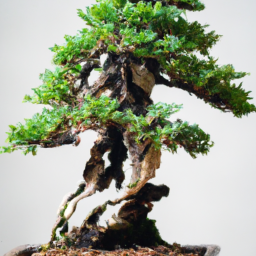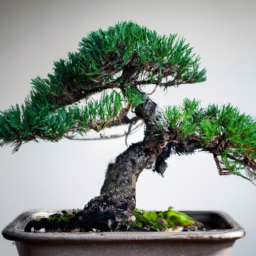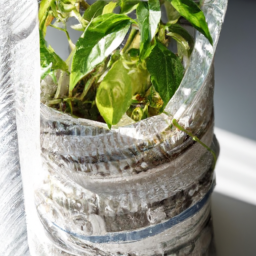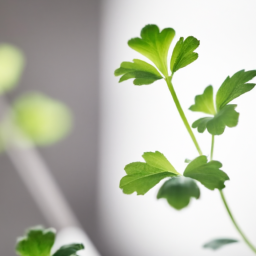
Hey there, fellow nature enthusiasts! Today, we’re diving into the enchanting world of bonsai beauties: miniature trees that pack a major artistic punch. From their humble beginnings as tiny saplings to their meticulously pruned and shaped forms, bonsai trees have captured the hearts and imaginations of people around the globe. In this blog post, we’ll explore the fascinating art of bonsai, uncover its rich history, and discover why these miniature marvels are more than just plants – they are true works of art. So, get ready to be mesmerized by the captivating world of Bonsai Beauties: Miniature Trees, Major Art.
The Art of Bonsai: Cultivating Miniature Trees with Majestic Beauty
Introduction
Welcome to the captivating world of bonsai, where miniature trees bring forth a sense of tranquility and beauty. Bonsai, originating from ancient China and later refined by the Japanese, is an art form that involves the cultivation of small trees in containers. These living sculptures are meticulously shaped and pruned to resemble full-sized trees, evoking a sense of majesty and harmony.
In this guide, we will explore the art of bonsai, from its rich history to the techniques and principles that guide its cultivation. Whether you are a seasoned bonsai enthusiast or a curious beginner, this article will provide you with valuable insights and step-by-step instructions to embark on your own bonsai journey.
The History of Bonsai: A Tale of Ancient Origins
Bonsai’s roots can be traced back over a thousand years to ancient China, where it was first practiced as a form of meditation and spiritual expression. The Chinese art of penjing, which translates to “tray scenery,” involved creating miniature landscapes with rocks, plants, and trees. These early practitioners sought to capture the essence of nature in a confined space, fostering a deep connection with the natural world.
During the Kamakura period in Japan (1185-1333), the art of bonsai was introduced and refined by Buddhist monks. They viewed bonsai as a way to bring nature into the confines of their monastic life, creating a serene and contemplative atmosphere. Over the centuries, bonsai evolved from a spiritual practice to a symbol of status and wealth among the Japanese elite.
It was not until the 19th century that bonsai gained international recognition, thanks to the efforts of Japanese bonsai masters who showcased their creations at world expositions. Today, bonsai has become a global phenomenon, captivating enthusiasts from all walks of life.
The Essentials of Bonsai Cultivation
Now that we have delved into the history of bonsai, let’s explore the essential steps involved in cultivating these miniature marvels:
1. Selecting the Right Tree
Choosing the right tree is the first and most crucial step in bonsai cultivation. While a wide variety of trees can be used for bonsai, some species are better suited for beginners. Common choices include junipers, pines, maples, and ficus. It is important to select a tree that is suitable for your climate and growing conditions, as different species have varying requirements.
When selecting a tree, look for one with a thick trunk and well-developed branches. These characteristics provide a solid foundation for shaping and styling the bonsai in the future. Additionally, consider the tree’s natural growth habits and choose a species that lends itself well to the desired bonsai style, whether it be formal upright, cascade, or windswept.
Once you have chosen your tree, it’s time to move on to the next step.
2. Potting and Soil
Proper potting and soil composition are essential for the health and development of your bonsai tree. Bonsai pots come in various shapes, sizes, and materials, each with its own aesthetic appeal. Traditional pots are often made of ceramic or clay, while more modern options include plastic and fiberglass.
When it comes to soil, bonsai trees have unique requirements. A well-draining soil mix is crucial to prevent waterlogged roots and promote healthy growth. A typical bonsai soil mix consists of a combination of akadama, pumice, and lava rock. This blend provides excellent drainage while retaining enough moisture for the tree’s roots.
During the potting process, ensure that the tree is positioned slightly off-center to create a sense of movement and balance. Gently secure the tree in place using bonsai wire or raffia, being careful not to damage the delicate branches.
3. Pruning and Shaping
Pruning and shaping are perhaps the most captivating aspects of bonsai cultivation. Through careful pruning, you can sculpt your bonsai tree into a miniature masterpiece, mimicking the grandeur of its full-sized counterparts.
Regular pruning helps maintain the desired shape and encourages the development of finer branches. Use sharp bonsai shears or concave cutters to remove unwanted growth, focusing on maintaining a balanced canopy and an overall pleasing silhouette. Avoid cutting too much at once, as it can stress the tree and impede its growth.
Shaping the branches is another critical aspect of bonsai cultivation. By wiring the branches and gently bending them, you can create elegant curves and achieve the desired aesthetic. Be mindful of the tree’s natural growth patterns and avoid forcing it into unnatural positions.
4. Watering and Fertilizing
Proper watering and fertilizing are essential for the health and vitality of your bonsai tree. Bonsai trees have unique watering requirements, as they are grown in shallow containers with limited soil volume.
Water your bonsai tree when the top layer of soil feels slightly dry to the touch. Avoid overwatering, as it can lead to root rot and other issues. It is better to underwater than to overwater, as most bonsai trees prefer slightly drier conditions.
Fertilizing your bonsai tree is necessary to provide it with the nutrients it needs for healthy growth. Use a balanced, slow-release bonsai fertilizer or organic alternatives. Follow the manufacturer’s instructions for the appropriate dosage and frequency of application.
Conclusion
Bonsai, the art of cultivating miniature trees with majestic beauty, offers a unique and rewarding experience. Through careful selection, potting, pruning, and shaping, you can create living works of art that bring nature’s tranquility into your home or garden.
Remember, bonsai cultivation is a journey that requires patience, dedication, and an understanding of the tree’s needs. By following the steps outlined in this guide, you are well on your way to becoming a bonsai master.
Immerse yourself in the art of bonsai, and let the beauty of these miniature trees inspire and captivate you.

Exploring the History and Origins of Bonsai: From Ancient China to Modern-Day Japan
Ancient Beginnings: The Birth of Bonsai
When we think of bonsai, we often associate it with Japan, but the art of cultivating miniature trees actually has its roots in ancient China. The Chinese were the first to practice the art of growing and shaping trees in containers, a technique that eventually spread to Japan and other parts of the world.
The earliest records of bonsai cultivation in China date back to the Tang Dynasty (618-907 AD). During this time, bonsai, known as “penzai,” were primarily created for religious and spiritual purposes. They were believed to bring peace, harmony, and a connection to nature. These early bonsai were often displayed in temples and palaces, and only the elite had the privilege of owning and caring for them.
It wasn’t until the Kamakura period (1185-1333 AD) in Japan that bonsai truly began to flourish and evolve into a distinct art form. Influenced by Chinese culture, the Japanese embraced bonsai and developed their own unique styles and techniques. Bonsai became a symbol of status and wealth, and the samurai class especially took great pride in cultivating and displaying these miniature trees.
The Influence of Zen Buddhism
During the Muromachi period (1336-1573 AD), Zen Buddhism had a profound impact on the development of bonsai in Japan. Zen monks, seeking enlightenment and a deeper connection with nature, used bonsai as a means of meditation and spiritual reflection.
Under Zen influence, bonsai began to take on a more minimalist and naturalistic style. The focus shifted from creating extravagant and intricate designs to capturing the essence of a tree in its natural state. Zen aesthetics emphasized simplicity, asymmetry, and the beauty of imperfection, all of which became integral elements of bonsai design.
With the rise of the tea ceremony during the Azuchi-Momoyama period (1573-1603 AD), bonsai gained even more popularity among the Japanese elite. Bonsai were often displayed in tea gardens, providing a tranquil and harmonious backdrop for the tea ceremony. The tea masters appreciated the symbolism and serenity that bonsai brought to their ceremonies.
The Modern Era: Bonsai in Japan Today
During the Edo period (1603-1868 AD), bonsai became more accessible to the general public. Nurseries specializing in bonsai cultivation emerged, and people from all walks of life began to appreciate and practice the art form. Bonsai clubs and societies were formed, fostering a sense of community and knowledge exchange among enthusiasts.
Today, Japan is considered the mecca of bonsai, with countless bonsai gardens, exhibitions, and competitions held throughout the country. Bonsai masters dedicate their lives to perfecting their craft, meticulously shaping and caring for their trees with unwavering dedication.
While the art of bonsai has spread to various parts of the world, Japan remains at the forefront of its development and innovation. Bonsai has transcended its cultural origins and has become a beloved art form cherished by people from all walks of life.
So, the next time you admire a beautifully crafted bonsai tree, remember its rich history and the centuries of dedication and artistry that have gone into its creation.

Bonsai Care Tips and Techniques: Nurturing and Maintaining the Beauty of Miniature Trees
Introduction
Bonsai trees are not just ordinary plants; they are living works of art that require special care and attention. These miniature trees, with their intricate shapes and delicate foliage, have captivated the hearts of many enthusiasts around the world. In this guide, we will explore the essential tips and techniques for nurturing and maintaining the beauty of bonsai trees. Whether you are a beginner or an experienced bonsai gardener, these insights will help you create a thriving bonsai collection.
Understanding the Basics of Bonsai Care
Bonsai care encompasses a wide range of practices, from watering and fertilizing to pruning and wiring. Each aspect plays a crucial role in shaping and preserving the health and aesthetics of your bonsai tree. Let’s delve into each step in detail.
1. Watering
Watering is one of the most critical aspects of bonsai care. The key is to strike a balance between overwatering and underwatering. Bonsai trees have specific water requirements that vary depending on the species, size, and environmental conditions. As a general rule, it is best to water your bonsai when the topsoil feels slightly dry to the touch. Use a watering can or a gentle spray nozzle to avoid disturbing the soil or damaging delicate branches. Remember to water thoroughly, allowing the water to seep through the drainage holes at the bottom of the pot.
Overwatering can lead to root rot and other fungal diseases, while underwatering can cause the tree to wither and die. To ensure proper hydration, monitor the moisture levels regularly and adjust your watering schedule accordingly. During hot summer months, you may need to water your bonsai more frequently, while in colder seasons, you may need to reduce the watering frequency.
2. Fertilizing
Fertilizing is essential to provide the necessary nutrients for your bonsai tree’s growth and development. There are various types of fertilizers available, such as organic and chemical options. Organic fertilizers, such as fish emulsion or compost, are often preferred as they provide a slow-release of nutrients and improve the overall soil quality. Chemical fertilizers, on the other hand, offer more precise control over nutrient ratios.
Fertilizing frequency depends on the specific needs of your bonsai tree. Generally, it is recommended to fertilize every two to four weeks during the growing season (spring to autumn) and reduce or stop fertilization during winter months. Be mindful not to over-fertilize, as it can lead to nutrient burn and damage the tree’s delicate roots. Always follow the instructions provided by the fertilizer manufacturer and adjust the dosage based on the tree’s response.
3. Pruning and Shaping
Pruning and shaping are fundamental techniques in bonsai care that help maintain the desired size and aesthetics of the tree. Regular pruning encourages new growth, improves branch structure, and enhances the overall shape of the bonsai. Start by removing any dead, damaged, or diseased branches using clean and sharp bonsai pruning shears. This not only promotes the tree’s health but also prevents the spread of pests and diseases.
Selective pruning is also essential to maintain the balance between foliage and branches. Trim back new growth to maintain the desired shape and prevent overcrowding. Additionally, wiring can be used to guide branches into specific positions, creating the desired artistic form. However, be cautious not to apply excessive pressure or leave wires on for too long, as it can cause damage to the tree’s bark.
Conclusion
Nurturing and maintaining the beauty of bonsai trees requires patience, dedication, and a deep understanding of their unique needs. By following these essential care tips and techniques, you can ensure the health and longevity of your miniature trees. Remember to water responsibly, fertilize appropriately, and prune with precision. Embrace the artistry of bonsai gardening, and let your creativity flourish as you shape these living masterpieces. With time and practice, you will witness the transformation of your bonsai beauties into majestic works of art.
Here’s what we learned
Bonsai trees have long been admired for their unique beauty and artistic appeal. These miniature trees, carefully sculpted and pruned to resemble their full-sized counterparts, are a testament to the patience and skill of their caretakers. But beyond their aesthetic value, bonsai trees hold a deeper meaning – they represent the harmony between humans and nature, and the delicate balance of life itself.
The art of bonsai originated in China over a thousand years ago, and later spread to Japan where it gained immense popularity. Bonsai, which translates to “tray planting,” involves the cultivation of small trees in shallow containers. The process of creating a bonsai tree is a labor of love, requiring years of careful cultivation and meticulous attention to detail. From selecting the right species of tree to shaping its branches and pruning its roots, every step is carried out with precision and care. The result is a living work of art, a miniature tree that embodies the beauty and grace of nature in a small, confined space. Bonsai trees are not only visually stunning, but they also serve as a reminder of the impermanence of life and the need to appreciate the present moment. So next time you come across a bonsai tree, take a moment to admire its intricate beauty and contemplate the profound message it holds.
Top FAQs:
Q1: What is ‘Bonsai Beauties: Miniature Trees, Major Art’?
A1: ‘Bonsai Beauties: Miniature Trees, Major Art’ is an exhibition featuring a stunning collection of bonsai trees. Bonsai is the art of growing and nurturing miniature trees in containers, creating living sculptures that embody the beauty and essence of nature.
Q2: Where is the ‘Bonsai Beauties: Miniature Trees, Major Art’ exhibition being held?
A2: The ‘Bonsai Beauties: Miniature Trees, Major Art’ exhibition is being held at the Green Thumb Gallery, located in the heart of the city. The gallery provides the perfect setting for showcasing these magnificent bonsai trees, allowing visitors to immerse themselves in the artistry and tranquility of these miniature landscapes.
Q3: How long will the exhibition be open?
A3: The ‘Bonsai Beauties: Miniature Trees, Major Art’ exhibition will be open to the public for a limited time. It will run for three weeks, starting from [start date] to [end date]. We encourage you to plan your visit accordingly to ensure you don’t miss this unique opportunity to witness the captivating world of bonsai.
Q4: Can I purchase bonsai trees at the exhibition?
A4: Unfortunately, bonsai trees will not be available for purchase at the exhibition. However, the exhibition provides a wonderful opportunity to appreciate the artistry and craftsmanship behind these miniature trees. If you’re interested in owning a bonsai tree, there may be local nurseries or specialized bonsai shops where you can explore and purchase them.
Q5: Are there any guided tours or workshops available during the exhibition?
A5: Yes, during the ‘Bonsai Beauties: Miniature Trees, Major Art’ exhibition, there will be guided tours and workshops conducted by experienced bonsai enthusiasts. These tours and workshops offer valuable insights into the techniques, history, and care of bonsai trees. It’s a fantastic chance to deepen your understanding of this ancient art form. Please check the exhibition’s schedule for specific dates and times of these events.
Dr. Olivia Green is a botanist with over two decades of experience in indoor plant cultivation. She holds a Ph.D. in Plant Biology and has dedicated her career to researching plant behavior in controlled environments. Dr. Green is passionate about helping plant enthusiasts master the art of indoor gardening through her extensive knowledge and practical insights.


